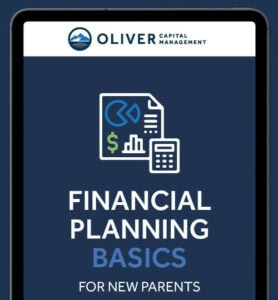Handling family finances can sometimes feel like walking a tightrope, especially when money sparks tension. According to a new Ipsos poll conducted on behalf of BMO, one in three (34%) partnered Americans see money as a conflict in their relationships. Additionally, over one-third think their partner spends too much on impulse buys (37%) or admit they’re not always truthful about money with their spouse (36%).
Despite these hurdles, most American couples are on the same page financially, with nearly 87% feeling comfortable discussing their finances, which underscores the importance of open communication.
Given that many people worry about their partner’s mortgage debt, credit card debt, and credit scores, it’s clear that smart family financial planning is more essential than ever.
In this article, we’ll look at the different elements that make up a successful family financial plan and give you some quick, actionable tips that you can use to get started.
What Is Family Financial Planning?
Family financial planning is about setting up a game plan that helps you and your loved ones manage your money wisely, so you can meet both immediate needs and long-term goals.
It’s a financial strategy that includes budgeting, saving, investing, and preparing for life’s unexpected turns. The goal is to ensure that your family enjoys financial health and achieves its dreams, whether that’s buying a home, funding education, or enjoying a comfortable retirement.
A study by Lincoln Financial Group found that 83% of people who set financial goals feel better about their finances after just one year.
Family financial planning isn’t just about numbers; it’s about creating a roadmap that reflects your family’s values and priorities. It’s about making decisions today that will benefit everyone tomorrow.
By involving every family member in the planning process you ensure that everyone is on the same page and committed to reaching those shared financial goals. It’s a collaborative effort that requires ongoing communication, flexibility, and a willingness to adapt as circumstances change.
Why Is Family Financial Planning Important?

A survey by Bankrate revealed that 46% of adults think that their biggest money mistake was not saving enough; whether for retirement, emergency expenses or their children’s educations.
Financial planning for your family is crucial because it provides a foundation for financial stability and confidence. Without a plan, managing money can feel like you’re constantly putting out fires—dealing with one financial crisis after another. A well-thought-out financial plan helps you avoid these crises by preparing for unexpected expenses, setting aside funds for future needs, and making informed decisions about spending and saving.
Planning also plays a key role in helping families achieve their long-term goals. Whether you’re saving for a down payment on a house, preparing for your children’s education, or building a retirement nest egg, having a plan in place makes these goals more attainable. It allows you to allocate resources effectively, prioritize what’s most important, and stay focused on what matters most.
Moreover, financial planning fosters financial literacy and responsibility among all family members. When everyone understands the family’s financial goals and the steps needed to achieve them, they are more likely to make informed choices that contribute to the overall financial well-being of the household. This shared understanding can also reduce financial stress and prevent conflicts over money.
How to Create a Family Financial Plan
Creating a family financial plan involves several key steps. First, assess your current financial situation by closely examining your income, expenses, debts, and assets. This will give you a clear picture of where you stand and help identify areas that need improvement.
Next, set realistic and achievable financial goals. These could range from short-term objectives like paying off credit card debt to long-term goals like retirement savings. Make sure these goals are specific, measurable, attainable, relevant, and time-bound (SMART).
Once your goals are defined, develop a strategy to achieve them. This includes creating a budget, which will help you track income and expenses, identify spending patterns, and find opportunities to save. It’s important to involve all family members in this process, as their input and cooperation are essential for the plan’s success.
Regularly review and adjust your financial plan to ensure it remains aligned with your goals and adapts to any changes in your financial status. This might include updating your budget, revising your savings targets, or re-evaluating your investment strategy.
How to get started: List your income sources and categorize your expenses to create a clear budget.
Budgeting and Spending as a Family

Budgeting as a family is all about teamwork. It starts with tracking everyone’s income and expenses to get a clear picture of your financial situation. By sitting down together and discussing your financial priorities, you can create a budget that reflects your family’s lifestyle and goals.
A family budget helps you allocate funds to essential needs, such as housing, food, and utilities, while also setting aside money for savings and future expenses. It encourages everyone to be mindful of their spending habits and to make conscious choices about where to cut back. For example, you might decide to cook more meals at home instead of eating out, or to find free or low-cost entertainment options.
Involving children in the budgeting process can also be a valuable educational experience. It teaches them about the importance of money management and helps them develop good financial habits from a young age. By working together, you can create a sense of shared responsibility and commitment to achieving your family’s financial goals.
How to get started: Use a budgeting app or spreadsheet to track your family’s income and expenses.
Debt Repayment as a Family

Managing debt as a family involves creating a repayment plan that considers all outstanding debts, including mortgages, credit cards, and loans. By prioritizing high-interest debts and making consistent payments, families can reduce their debt burden and improve their financial health.
Debt repayment requires a disciplined approach and a willingness to make sacrifices in the short term for long-term financial stability. This might mean cutting back on discretionary spending, finding ways to increase income, or consolidating debts to lower interest rates.
It’s important to communicate openly about debt and to support each other through the repayment process. Celebrate small victories along the way, such as paying off a credit card or reducing the principal on a loan. This can help keep everyone motivated and focused on the ultimate goal of becoming debt-free.
How to get started: List all your debts and their interest rates to prioritize which ones to pay off first.
Financial Planning for New Parents

Bringing a child into the world is an exciting and life-changing event, but it also comes with new financial responsibilities. To ensure a smooth transition into parenthood, it’s important to start financial planning early. Begin by creating a baby budget, and estimating the costs associated with having a baby, such as medical expenses, baby gear, childcare, and diapers. Set aside funds to cover these initial expenses and adjust your budget as needed.
By thinking about your family’s financial future you can create a solid foundation for your growing family, allowing you to focus on the joys of parenthood. It might feel overwhelming at first, but with careful planning and informed decisions, you’ll be better prepared to handle the challenges and relish the rewards that come with raising a child.
How to get started: Review your insurance coverage to ensure you have adequate health insurance for both pregnancy and the baby.
Build a Family Emergency Fund

An emergency fund is a crucial part of any family financial plan. This fund acts as a safety net for unexpected expenses, such as medical emergencies, car repairs, or job loss, providing financial stability and confidence.
Building an emergency fund involves setting aside a portion of your income each month until you have enough to cover three to six months’ worth of living expenses. This might seem like a daunting task, but it can be achieved with consistent effort and careful budgeting.
Having an emergency fund in place reduces the need to rely on credit cards or loans when unexpected expenses arise, which can help prevent further debt accumulation. It also provides a sense of security and reduces financial stress, allowing you to focus on other aspects of your financial plan.
How to get started: Set aside a specific amount each month until you reach your emergency fund goal.
General Savings for Families

Saving money is a cornerstone of financial planning for families but a 2016 GOBankingRates survey found that 35 percent of all adults in the U.S. have only several hundred dollars in their savings accounts and 34 percent have zero savings. It’s not just about putting money aside; it’s about creating a safety net for unexpected expenses, like medical emergencies, car repairs, or home maintenance. Having a dedicated savings account means you won’t have to rely on credit cards or loans, which can lead to debt.
Savings also allow you to plan for future goals, whether it’s a family vacation, a new car, or a down payment on a house. By setting aside money regularly, you can make these dreams a reality without compromising your day-to-day financial stability.
Additionally, saving teaches valuable financial discipline and responsibility to all family members. When everyone understands the importance of saving and contributes to the effort, it fosters a sense of teamwork and shared commitment to financial well-being.
How to get started: Set up an automatic transfer to a savings account, even if it’s just a small amount each month. This habit helps you build your savings effortlessly.
Outline Your Family’s Financial Goals

Setting financial goals as a family helps everyone understand and work towards common objectives. Whether it’s saving for a vacation, buying a home, or funding a child’s education, having clear goals provides direction and motivation.
Start by discussing your family’s short-term and long-term goals, and then break them down into specific, actionable steps. For example, if your goal is to save for a down payment on a house, determine how much you need to save each month and set up a dedicated savings account for this purpose.
Make sure your goals are realistic and achievable, and adjust them as needed based on changes in your financial situation. Regularly review your progress and celebrate milestones along the way to stay motivated and committed to your goals.
How to get started: Break down long-term goals into smaller, manageable steps to make progress more attainable.
Retirement Planning

Retirement planning is essential for ensuring financial security in the later stages of life. By saving and investing wisely, families can build a nest egg that supports a comfortable and fulfilling retirement. It’s never too early to consider where your retirement income will come from.
Start by determining how much you will need to save for retirement based on your desired lifestyle and anticipated expenses. This might involve estimating your future living costs, healthcare expenses, and any travel or leisure activities you plan to enjoy.
Next, explore different retirement savings options, such as employer-sponsored retirement plans, individual retirement accounts (IRAs), and other investment vehicles. Consider working with a financial advisor to develop a diversified investment strategy that aligns with your risk tolerance and retirement goals.
It’s also important for you or your certified financial planner to review and adjust your retirement plan regularly to ensure it remains aligned with your goals and adapts to any changes in your financial situation. This might include increasing your contributions, re-evaluating your investment strategy, or adjusting your retirement timeline.
How to get started: Maximize your contributions to employer-sponsored retirement plans to take advantage of employer matches.
College Planning

Planning for a college education involves saving for tuition and related expenses well in advance. Families can explore various options, such as 529 plans, scholarships, and financial aid, to make higher education more affordable.
Start by estimating the cost of college based on your desired school and program, and then determine how much you need to save each month to reach your goal. Consider setting up a dedicated college savings account, such as a 529 plan, which offers tax advantages and can help your savings grow over time.
Encourage your children to explore scholarship opportunities and apply for financial aid to reduce the overall cost of college. This might involve researching different scholarships, writing essays, and preparing for interviews.
Involving your children in the college planning process can also help them understand the importance of saving for their education and develop good financial habits. By working together, you can make higher education more attainable and reduce the financial burden on your family.
How to get started: Consider opening a 529 college savings plan and making automatic contributions.
Insurance Planning

Insurance planning involves assessing your family’s insurance needs and obtaining appropriate coverage. This includes health, life, disability, and property insurance, protecting your family from financial hardships.
Start by evaluating your current insurance coverage and identifying any gaps or areas that need improvement. This might involve reviewing your health insurance plan, considering additional coverage for critical illnesses or long-term care, and obtaining life insurance to protect your family’s financial future.
Next, explore different insurance options and compare policies to find the best coverage for your needs. Consider working with an insurance agent or financial advisor to help you navigate the complexities of insurance planning and make informed decisions.
Regularly review and update your insurance coverage to ensure it remains aligned with your family’s needs and any changes in your financial situation. This might include adjusting your coverage amounts, adding new policies, or changing providers.
How to get started: Review your current insurance policies to ensure you have adequate coverage for your family’s needs.
Estate Planning

Estate planning ensures that your assets are distributed according to your wishes and provides for your family’s future. This involves creating wills, trusts, and other legal documents to manage your estate effectively.
Start by identifying your estate planning goals, such as providing for your family’s financial security, minimizing taxes, and ensuring your assets are distributed according to your wishes. Next, work with an attorney to create a comprehensive estate plan that includes a will, trusts, power of attorney, and other essential documents.
It’s important to communicate your estate planning goals and decisions with your family to ensure everyone understands your wishes and the steps needed to achieve them. This can help prevent conflicts and ensure a smooth transition of your assets.
Regularly review and update your estate plan to ensure it remains aligned with your goals and any changes in your financial situation. This might include updating beneficiaries, revising your will, or adding new trusts.
How to get started: Create a will and update it regularly to ensure it reflects your current wishes.
Elderly Parents’ Financial Support

As families plan their finances, it’s important to consider the potential need for supporting elderly parents. This can significantly impact a family’s budget and long-term financial goals.
A NerdWallet survey found that more than a third of Americans (36%) think their parents will need financial assistance as they age, and 55% of Americans are already helping parents financially or plan to do so.
Understanding your parents’ financial needs allows you to plan accordingly and avoid surprises. Consider setting aside a specific fund for these expenses, much like an emergency fund. This can help ensure you’re financially prepared to support your parents without compromising your financial stability. Also, explore options like long-term care insurance or government programs that can help offset some of the costs.
How to get started: Have an honest conversation with your parents about their financial needs and plans. This helps you start planning for any support they might require.
Should You Use a Financial Advisor for Family Financial Planning?
A financial planner offers valuable advice and experience, simplifying your family’s financial management. They help navigate the various aspects of your financial strategy, ensuring you understand your options without getting overwhelmed. For busy families, a financial advisor can save precious time, allowing you to focus on enjoying life rather than managing finances.
Finding the right financial advisor is so important because your financial plan will be made up of long-term goals. Choosing an advisor who you enjoy working with will allow them to build a relationship with you and use their insights to personalize your plan.
How to get started: Research and interview potential family financial planners to find one that aligns with your family’s needs and values.
Bottom Line
Family financial planning is vital for achieving financial stability and reaching long-term goals. Working together and involving everyone in the process can build a strong financial foundation for your family’s future.
The certified financial advisors at Oliver Capital Management have years of experience working with families and setting long-term financial goals. If you’d like to chat with one of our financial advisors about your family’s financial goals, get in touch today.
—
7222906RG_Oct26
